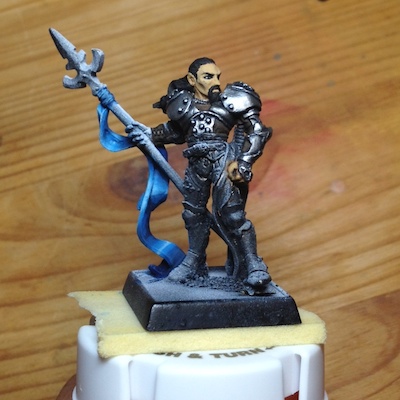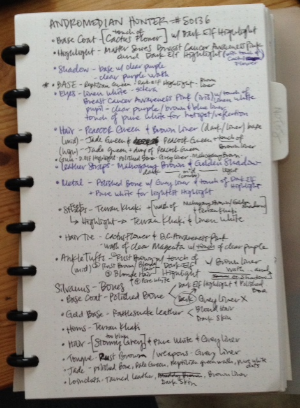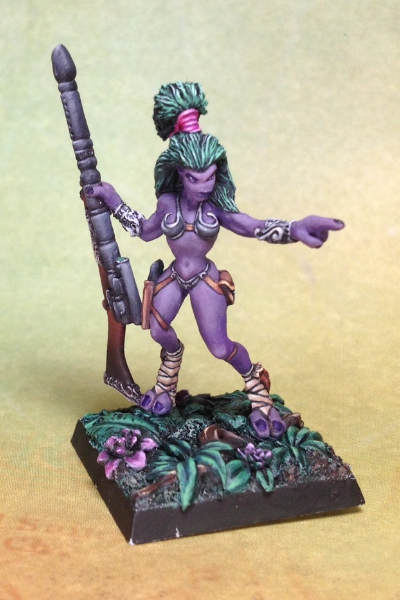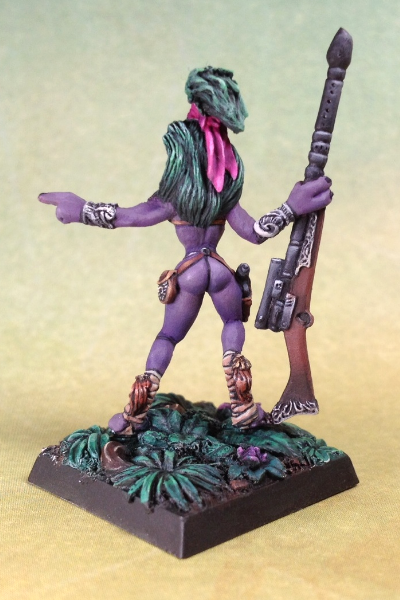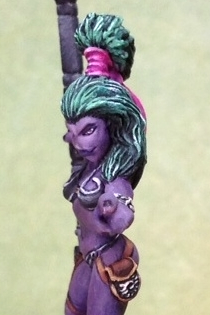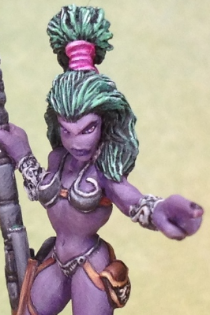Until now, Twitch was just another app in my XBOX Live TV section. When I tried it out, I was unimpressed. For those that may not be as familiar with Twitch, it's a video platform that features live streams of people playing video games. I've watched Let's Plays for years on YouTube. I didn't understand the appeal of something that was just an unedited, chaotic version of a Let's Play that you couldn't rewatch at your convenience. I'm a busy person (aren't we all?) and just couldn't appreciate scrambling to a computer if & when I see a random "We're streaming in 5!" tweet. If you're available, you watch the live stream. If you're not available, you miss out. LAME. However...
Yesterday I decided to give it another try when I saw a Lead Concept Artist from Privateer Press tweet, "Hold onto your butts, it's time to stream!". I had no idea that non-gaming live streams existed. I signed up (officially, so I was no longer a lurker) and logged in to see Nicholas Kay (@nicholasmkay) rendering a digital painting of a futuristic landscape. His work is amazing! While he painted, he actively answered questions from a chat room full of people from several different countries. Now, keep in mind, the last time I've been a part of chat rooms was back in the 90's where people had about 65 different conversations over each other and emoticons were limited to the text symbols on your keyboard. Chat rooms were all the same-- and my overly-polite nature was evidently a flaming beacon for trolls. Despite not knowing the community on Twitch, I decided to jump in and ask a few questions like:
"What keeps you inspired when you find yourself in a creative rut?"
"Tell us about that 'light bulb' moment that changed the way you thought about painting when you were studying art"
"What's the biggest mistake you made starting out as a freelancer and what did you learn from it?"
Nicholas answered those questions along with several others from the viewers. I immediately understood the appeal of Twitch. I feel like Twitch and Twitter go hand-in-hand. Twitch appeals to people because of its possibility for immediate engagement, feedback, and open conversation you can't have on other social media platforms. One can leave comments on YouTube or Facebook, but the broadcaster and the audience lose something in between that time & space. Twitch is fleeting-- its appeal is based on the sense of urgency and excitement that comes with, say, flash sales or flash mobs. It only happens once so be there.
How does this relate to miniature painting you may ask? Well, for me, it's a form of inspiration. Inspiration can be found in many places, and for me, watching someone paint is absolutely fascinating. You get to see their creative process, their approach, their mistakes and how they fix them, and be present for their "happy little accidents" that occur in almost every artistic effort, whether big or small. The community seemed genuinely appreciative and interested in what Nicholas was painting and just about him in general. "What's your favorite movie genre?" one person asked. Another requested, 'Please say 'boobs'!" He did. Twitch is fun, casual, and totally accessible. I researched a bit more into Twitch and found others who stream interesting creative content. At this point, I'm still fond of the edited Let's Plays when watching others play video games, but I'm no longer opposed to the idea of live-streams. Since I'm still discovering to the less-familiar side of Twitch, I'll be keeping an eye out for Allison (@allisonr_91) where she streams DnD 3.5 with her group Monday nights. Sounds like fun! I'll be tuning in next time.
Now that I've started to understand the Twitch appeal & community, I'll be making myself available during scheduled live streams. And hey, if I see the occasional "We're streaming in 5!" from my favorite broadcasters, best believe I'm going to scramble to a computer.


